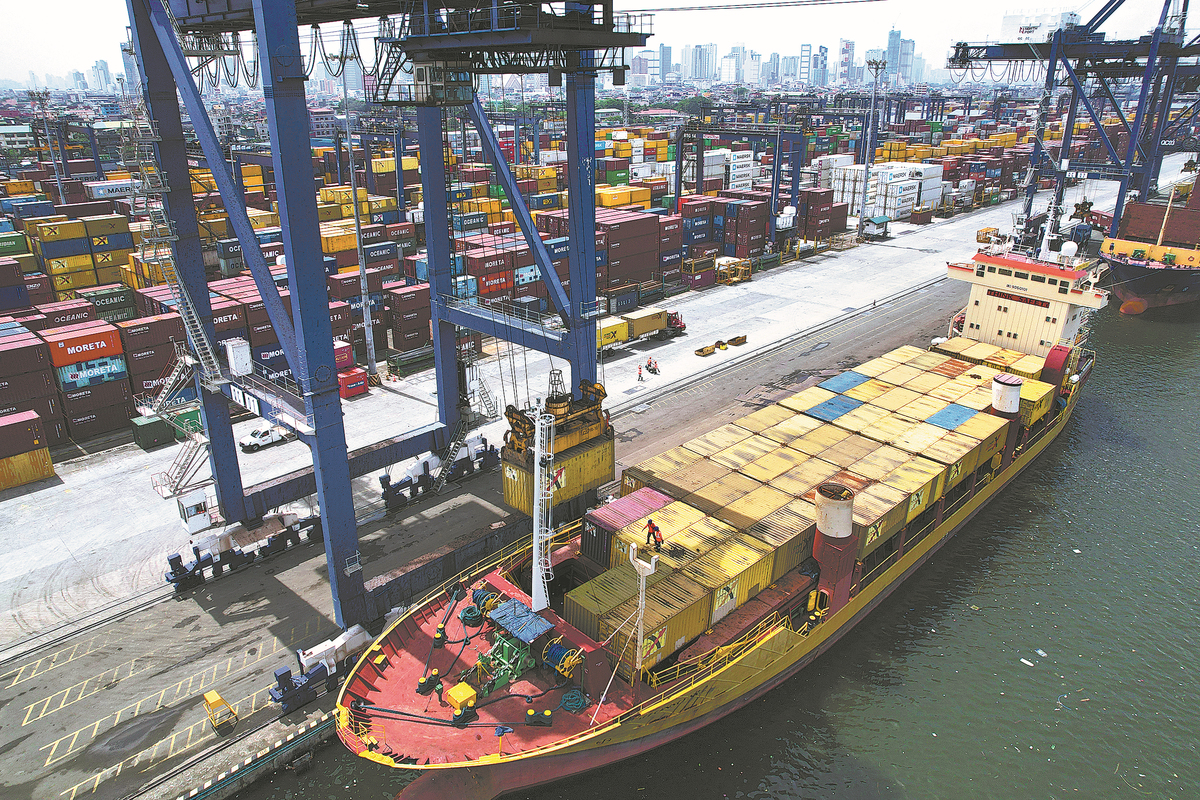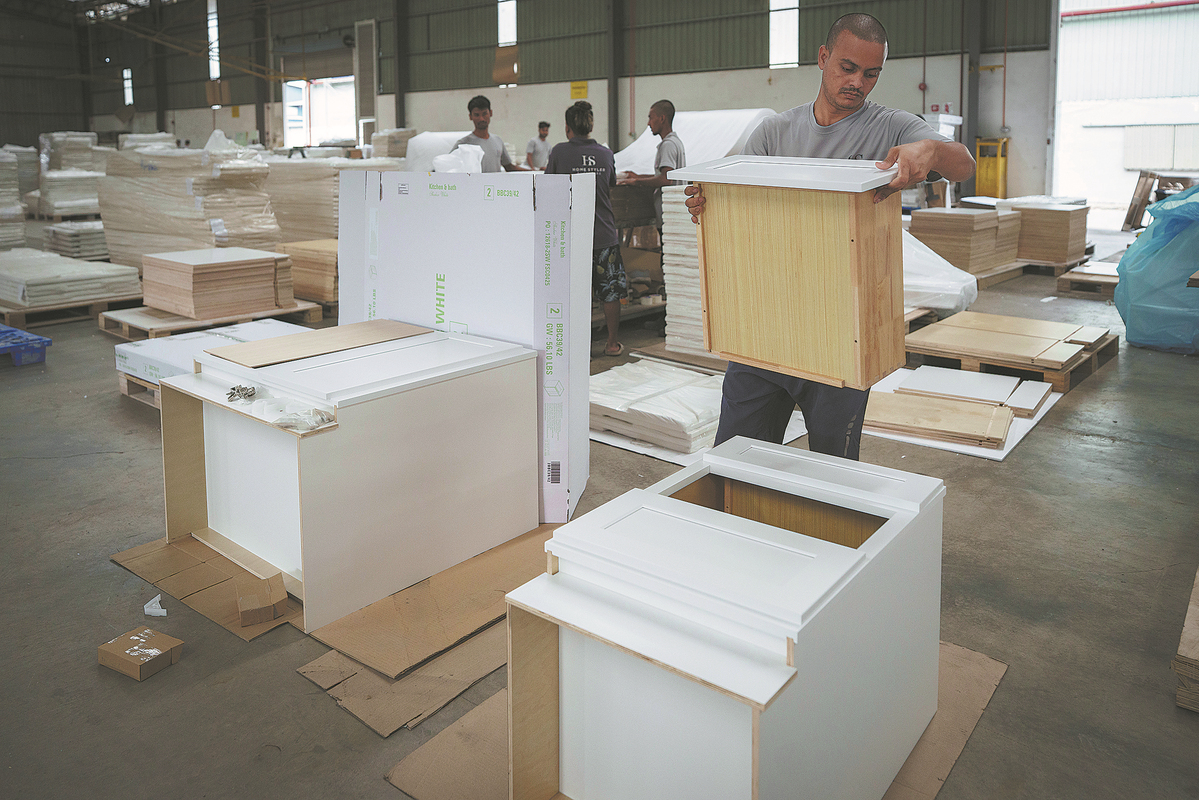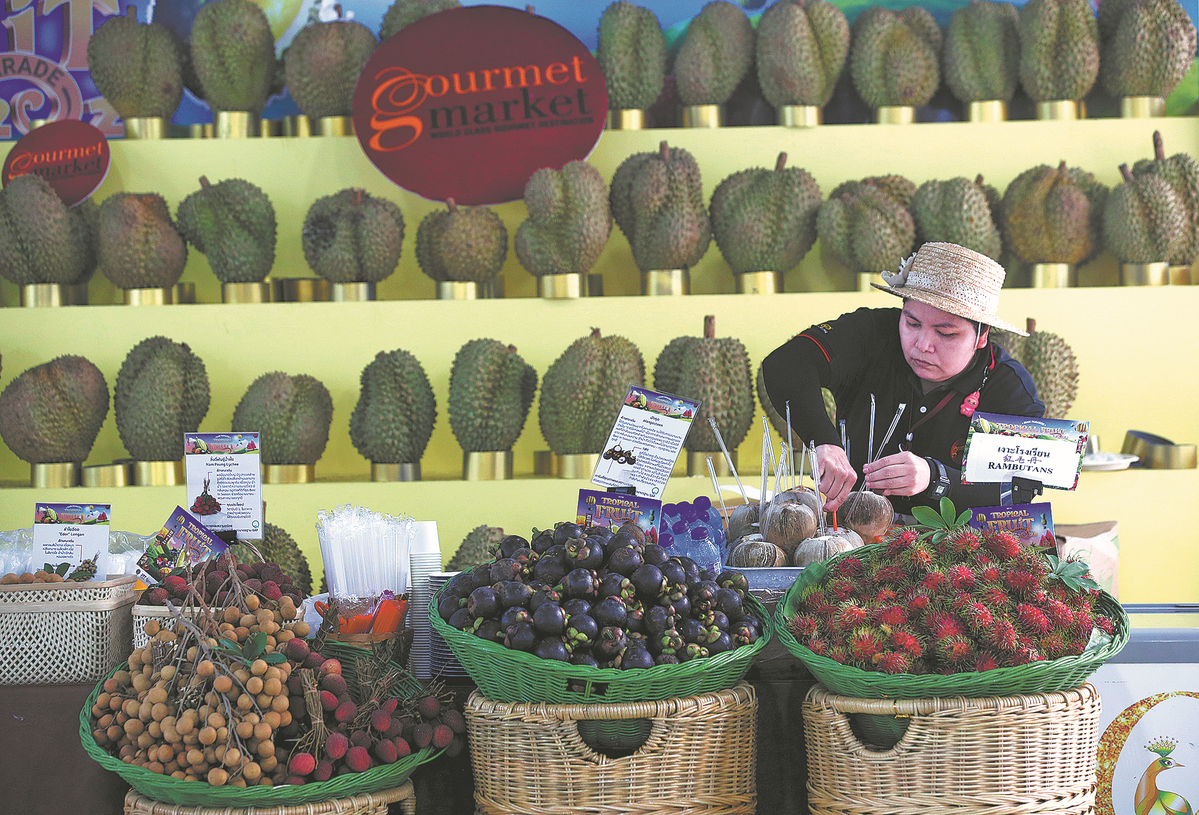
KUALA LUMPUR – During his opening remarks at the Global Halal Summit in September, Malaysian Minister of Investment, Trade, and Industry Tengku Zafrul Abdul Aziz recalled the "complex, challenging process" of negotiating tariffs with the United States.
The trade minister led a high-level Malaysian delegation to Washington to negotiate the tariffs, after US President Donald Trump announced in April he would slap "reciprocal tariffs", ranging from 10 to 50 percent, on dozens of trading partners. Malaysia, one of the world's biggest exporters of semiconductors and commodities, was alarmed by the prospect of a 25 percent tariff.
Tengku Zafrul said one of the sticking points in the negotiations was Malaysia's halal certification, which was regarded as a form of "non-tariff barrier". However, Malaysia considers the halal standards a "red line" that needs to be defended, Tengku Zafrul told hundreds of participants who gathered at the Sept 19 summit in Kuala Lumpur.
He said that while Malaysia agreed to the facilitation of the import process for certain halal-certified products, "we stood firm on maintaining our world-class, world-leading halal standards".
READ MORE: ASEAN says tariffs unfair, pose threat to free trade
Muslim-majority Malaysia maintains a halal certification system. Halal means permissible, or lawful, in Arabic, and most of the country's population consumes products and services allowed in the Islamic faith.
The nearly four-month negotiations concluded on July 31 with Trump agreeing to reduce the tariff on Malaysian products to 19 percent. While Malaysia has succeeded in maintaining its halal standards, it also offered concessions to the US — a commitment to buying aircraft, energy and telecommunications equipment.
Despite the tariff reductions and concessions, Bank Negara Malaysia, the country's central bank, in late July cut Malaysia's GDP forecast for the year to 4 to 4.8 percent from the 4.5 to 5.5 percent forecast in March.
"The global growth outlook is affected by shifting trade policies and uncertainties surrounding tariff developments, as well as geopolitical tensions. As a small open economy, Malaysia's growth prospects will be shaped by these developments," BNM said in a statement.

'Lopsided' deals
Malaysia's experience is not unique among its Association of Southeast Asian Nations peers, in an export-dependent region that is among the hardest hit by the US tariffs.
Analysts see slower growth for most ASEAN countries in the coming months as tariffs boost consumer prices in the US and possibly discourage imports from ASEAN countries.
Like Malaysia, the Philippines, Indonesia and Thailand sent high-level delegations to negotiate with the Trump administration. They also agreed to concessions in exchange for tariff cuts, as well as additional imports from the US and allowing duty-free access of US goods into their domestic markets. Analysts viewed many of these deals as lopsided in favor of the US.
Amitendu Palit, a senior research fellow at the National University of Singapore's Institute of South Asian Studies, said each ASEAN country "has paid a fairly high price for entering into a deal with the US".
Despite committing to buy more US products and allowing more US businesses to access their markets, no ASEAN country managed to get "full access into the US market", he said. "They still continue to face tariffs. So, it's not a very happy situation for (ASEAN) economies," Palit told China Daily.
Indonesia, Malaysia, Cambodia, the Philippines and Thailand were hit with 19 percent tariffs from Aug 7, while Vietnam was slugged with 20 percent. Brunei faces 25 percent, Laos and Myanmar both 40 percent, and Singapore 10 percent.
While these tariff rates are lower than what Trump initially announced in April, they are higher than the rates that were in place beforehand.
Kuala Lumpur-based Kenanga Investment Bank said in its Aug 4 research note that prior to the "reciprocal tariff shock", Malaysia enjoyed "very low" US tariffs. Some were even as low as zero on exports like semiconductors, electronics and pharmaceuticals.
The preferential rates were due to most-favored-nation status, which is in line with the rules of the World Trade Organization.
ALSO READ: New US tariffs pose threats to ASEAN nations
OCBC Bank in Singapore has estimated that the effective US tariffs imposed against ASEAN's six biggest economies — Indonesia, Malaysia, the Philippines, Singapore, Thailand and Vietnam — are significantly higher than the MFN rates.
Financial experts see higher rates as a drag on growth in a region that has long relied heavily on the US for export revenues. In a report issued on Sept 23, S&P Global Ratings said it expects "external forces" to pressure Asia-Pacific growth in the rest of 2025 and into 2026.
The report added that Asia-Pacific exports have held up so far in 2025 due in part to front-loading and strong demand for tech products.
However, the credit rating agency forecasts ASEAN GDP growth will ease by 0.4 percentage points from 2024 to 4.5 percent in 2025, with "below-trend growth" in 2026, as the impact of the US tariffs hits. Some of this impact will be mitigated by robust electronics demand and accommodative monetary policy.
In recent months, ASEAN member states' central banks have been cutting interest rates to support their economies amid the financial headwinds.
On July 9, Malaysia's BNM cut interest rates for the first time in nearly two years as "a pre-emptive measure aimed at preserving Malaysia's steady growth path".
In August, the Bank of Thailand and the Philippines' Bangko Sentral ng Pilipinas reduced their rates to three-year lows of 1.5 percent and 5 percent, respectively.
"In the near term, ASEAN countries are basically adopting a few counter-cyclical policies," said Lavanya Venkateswaran, OCBC's senior economist for ASEAN.
But over the long term, ASEAN economies with bigger export sectors — like Thailand, Malaysia and Vietnam — will need to diversify trading and investment partners and reduce reliance on the US, she added.
"Things are not what they used to be prior to President Trump's second term in the US. Each country will have to navigate these turbulent waters in the way it sees fit.
"So whether that means continued protectionism for certain industries, whether that means opening up your economies for certain sectors, all of that will have to be re-engaged under the new rules of the game," Venkateswaran told China Daily.
Erica Tay, Maybank's director of macro-research, said more domestically driven ASEAN economies, like the Philippines and Indonesia, will be less exposed to trade shocks. However, an economy's resilience against the impact of US tariffs will not depend on the size of its export sector alone, she added.
An economy's resilience hinges a great deal on how much fiscal firepower a country has, Tay told China Daily. She cited Singapore, which might be export-dependent, but is also the wealthiest member of ASEAN, as an example.
"Singapore is in quite a good place because it does have the fiscal resources to roll out some pump-priming projects to cushion economic growth during this very tumultuous period in the global trade landscape, whereas countries such as Thailand might not have much (fiscal) space," Tay said.

Dumping fears
The effect of the tariffs goes beyond the magnitude of the rates hurting ASEAN states' export earnings.
The concessions offered to the US are mostly one-sided in favor of Washington, said Yose Rizal Damuri, executive director of the Centre for Strategic and International Studies in Jakarta.
The Philippines, for example, concluded negotiations with the US by allowing duty-free access of US goods to its local markets. This spells trouble for Philippine producers and industries, which are not competitive, he said. The Philippine food and agriculture sector is especially vulnerable.
Zero tariffs on US farm products like corn and soy could lower the cost of production of Philippine poultry and livestock raisers, said Marie Annette Galvez-Dacul, executive director of the Center for Food and Agri Business at the Manila-based University of Asia and the Pacific. The domestic market may also be swamped with low-cost US meat, undercutting local producers.
"Dumped US farm surpluses could depress prices and squeeze Filipino farmers. The government can guard against this with trade remedies and farmer support," Galvez-Dacul said.
Danilo Fausto, president of the Philippine Chamber of Agriculture and Food Inc, said discussions with Philippine officials revealed that some products such as corn are exempt from the duty-free access agreement.
REA DMORE: ASEAN eyes wider trade partnerships
"Some of the Philippine feed millers would like corn to be included in the zero tariff so that the import cost will be lower. But it might (hurt) the local corn farmers. So we have to balance these things," Fausto said.
He said he's also concerned about the possibility of dumping US food products in the market. The US, for example might dump their milk products in the Philippines, which will harm local dairy farmers.
"They cannot recover (from the dumping) or even develop the industry going into the future," Fausto said.
Fermin Adriano, former Philippine agriculture undersecretary, said improving productivity by boosting the budget for different crops could help the competitiveness of local agricultural products.

New connections
In the meantime, the Philippines should scale down its dependence on the US market. "I don't think that we should be dependent on the US because of this ever-changing policy of the (Trump) administration. It's quite difficult to make a business or to do business if you keep on changing the reference point," Adriano said.
The best course of action is to diversify markets and strengthen economic relationships with other trading partners like India and China, he said.
Palit of NUS said joining broader international groups and entering trade partnerships is important amid the rise of US protectionism.
He cited BRICS, which counts some of the world's largest emerging economies among its member states, as an example.
"(They) really offer between themselves large opportunities for exchanges … in terms of products that earlier used to be focused largely on the American market," he said.
There is the possibility of more bilateral trade agreements and multicountry coalitions emerging, Palit said.
"Maybe we will also see regional frameworks like the ASEAN Plus framework becoming much more effective," he said, adding that as such frameworks modernize, more opportunities for diversification will be created.
In the long term, Tengku Zafrul believes the global trade system needs a new start in light of the challenges presented by high US tariffs.
"The past few months have amply proved that no country is an island, and that geopolitics goes hand-in-hand with geoeconomics," the Malaysian minister said at the Global Halal Summit.
"The global trading system needs a reset. It shouldn't be about stopgap measures. Neither can it be about creating new 'clubs'. It is about reimagining the architecture."
Contact the writer at prime@chinadailyapac.com


